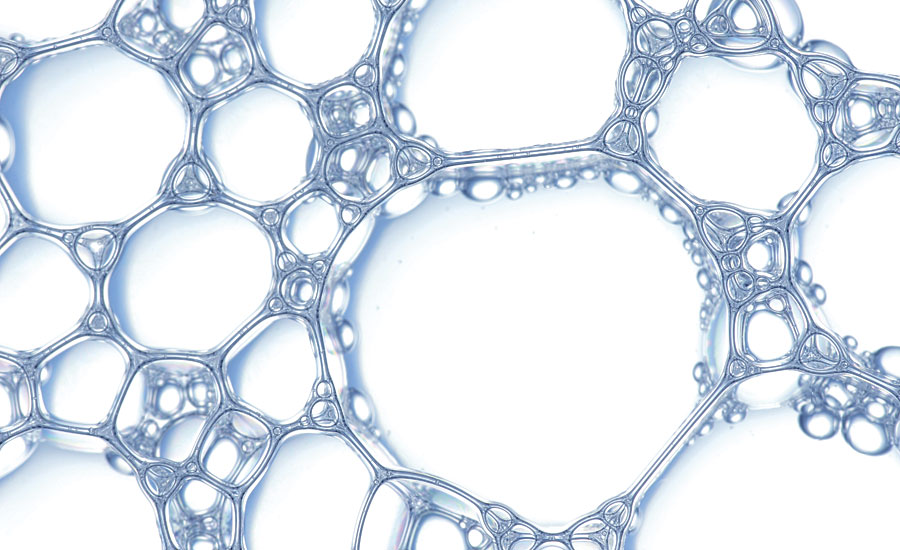Benefits of Using Defoamers to Enhance Operational Efficiency
Benefits of Using Defoamers to Enhance Operational Efficiency
Blog Article
Selecting the Right Defoamer for Your Certain Application Demands
Choosing the proper defoamer for certain application needs is a nuanced procedure that requires cautious factor to consider of numerous elements, such as the foam operating, medium, and type conditions. Comprehending the nuances of defoamer efficiency-- including speed and determination-- while additionally making up ecological and regulative elements is essential. Furthermore, taking part in trials and talking to makers can offer valuable understandings. However, browsing these complexities can be daunting, and the repercussions of a poor option might be considerable. What approaches can be employed to make sure an optimal choice?
Recognizing Foam Formation
Foam formation takes place when gas is entraped within a liquid, producing a steady framework of bubbles. This phenomenon can significantly affect different commercial procedures, specifically in fields such as food production, pharmaceuticals, and wastewater treatment. The presence of foam can hinder mixing, minimize product high quality, and even cause functional inadequacies.
Foam typically develops because of a mix of variables, consisting of surface-active agents, anxiety, and the attributes of the fluid stage. Surfactants lower the surface stress of the fluid, helping with the formation of bubbles that can support and integrate. Frustration, whether from mechanical mixing or gas introduction, boosts bubble formation, leading to enhanced foam quantity.
Comprehending the technicians of foam development is essential for markets intending to optimize their procedures. By identifying the specific problems that advertise foam generation, organizations can carry out approaches to mitigate its impacts. This expertise lays the foundation for choosing suitable defoaming agents that properly target the special difficulties positioned by foam in different applications. An extensive understanding of foam formation is crucial for improving effectiveness and keeping item integrity throughout numerous industries.
Kinds of Defoamers Available
Different kinds of defoamers are offered to attend to the obstacles presented by foam in industrial applications. defoamers. Generally classified, defoamers come under three groups: silicone-based, non-silicone-based, and natural defoamers
Silicone-based defoamers are renowned for their effectiveness and security throughout a wide variety of temperatures and pH levels. They are typically utilized in applications where strong foam reductions is essential, such as in adhesives, coatings, and paints. Their reduced surface area stress permits rapid foam collapse.
Non-silicone-based defoamers, commonly made from natural substances, offer an alternative for applications sensitive to silicone deposits. These defoamers can be more separated into polyether and ester types, each tailored to meet certain solution needs. Non-silicone defoamers are regularly used in food processing and personal care products because of their compatibility with different formulas.
Natural defoamers, obtained from plant or animal sources, are acquiring traction because of their green profile. These products are particularly appealing in applications where regulative conformity and sustainability are extremely important, such as in agrochemicals and biotechnology.
Picking the right kind of defoamer is essential for optimizing performance and ensuring compatibility with particular applications.
Secret Application Considerations
When choosing a defoamer, it is vital to think about the particular application requirements to guarantee optimal efficiency. defoamers. Various markets their explanation have distinct demands, such as food handling, pharmaceuticals, or wastewater treatment, and each application might need special defoaming homes
Key variables to assess consist of the medium in which the defoamer will be made use of, whether it is water-based, oil-based, or a combination thereof. The temperature level and pH levels of the application can additionally greatly affect the performance of a defoamer. In addition, compatibility with other chemicals existing in the system is important to stop damaging reactions that can jeopardize efficiency.
Another vital consideration is the frothing behavior of the details system. Comprehending whether the foam creates swiftly or gradually can direct the option of a defoamer that targets the root reason effectively. The preferred speed of defoaming can affect the selection, as some applications site here need quick activity while others might endure slower defoaming processes.
Finally, regulative and ecological considerations should not be neglected, specifically in industries with strict compliance requirements. Selecting a defoamer that aligns with these elements makes certain both efficiency and safety in the application.

Performance Screening Approaches
Reviewing the efficiency of a defoamer needs a methodical method to testing that accurately gauges its performance in certain applications. Different performance screening techniques can be utilized to ascertain the optimum defoamer for an offered solution.
One typical approach is the bubble test, which reviews the defoamer's ability to minimize foam volume over time. This examination includes creating a stable foam and after that adding the defoamer to observe the rate of foam collapse.
Eventually, choosing the proper efficiency screening approach depends on the specific application and the kind of foam being resolved. Each method provides important data that can assist formula this content changes and enhance the efficiency of the defoamer in functional applications.
Best Practices for Option


Following, take into consideration the defoamer's efficiency in regards to rate of activity and perseverance. A quick-acting defoamer might be necessary for processes where fast foam suppression is important, while a more consistent solution might be required for long term foam control. Additionally, assess the environmental impact of the defoamer, including its biodegradability and any regulatory conformity needs.
Conduct trials with picked defoamers to identify their performance in real-world conditions. By sticking to these best techniques, you can improve foam control performance and make sure the longevity of your procedures.
Conclusion
In recap, picking the ideal defoamer necessitates an extensive examination of numerous variables, consisting of foam kind, tool, operating problems, and ecological considerations. Recognizing the unique attributes of foam formation and the available defoamer choices is crucial.
Selecting the suitable defoamer for particular application requirements is a nuanced process that demands careful factor to consider of numerous variables, such as the foam operating, type, and medium problems.Picking the appropriate defoamer is crucial for attaining optimum efficiency in foam control applications. A quick-acting defoamer might be required for processes where rapid foam suppression is critical, while an extra relentless formula might be needed for prolonged foam control.In summary, picking the ideal defoamer demands a thorough examination of different elements, including foam kind, tool, operating conditions, and environmental factors to consider. Understanding the unique characteristics of foam formation and the readily available defoamer options is crucial.
Report this page